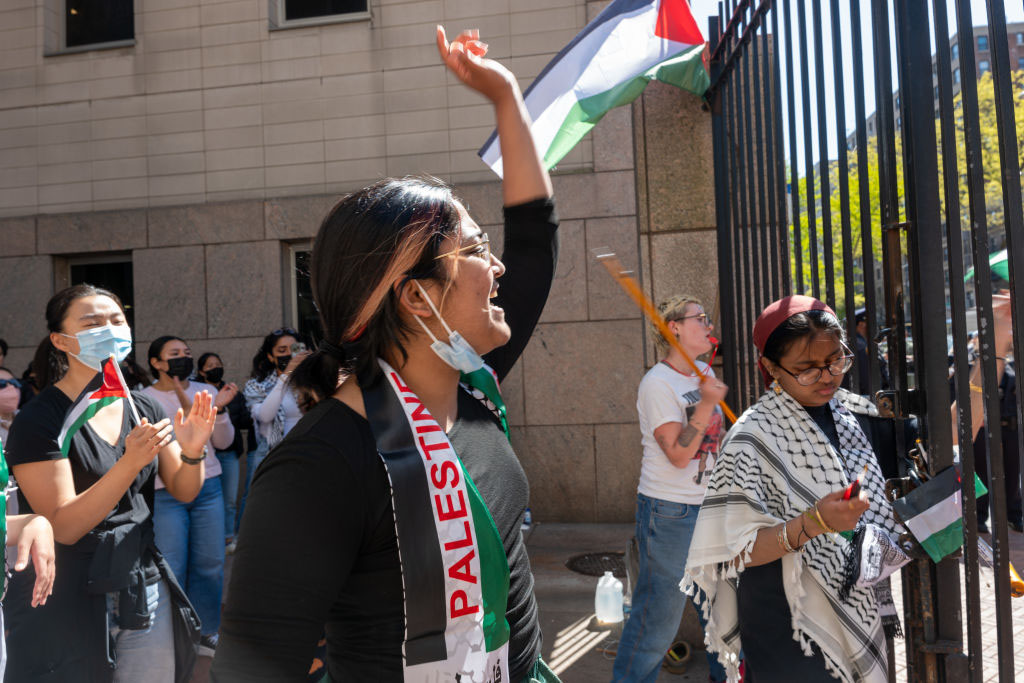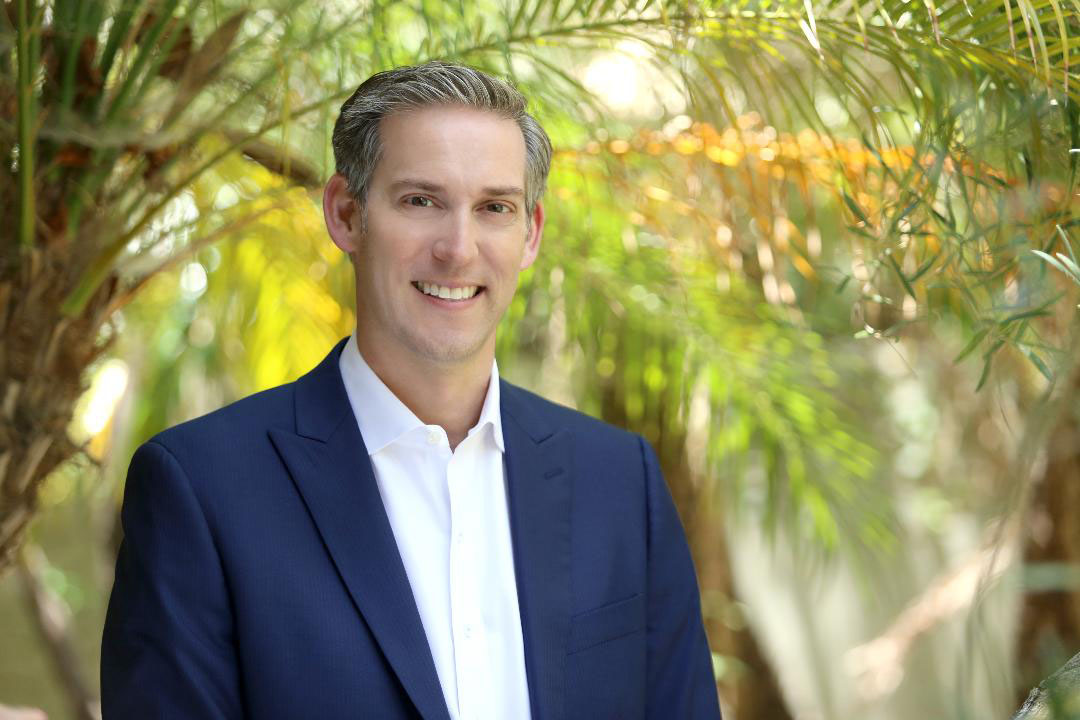 Valley Beth Shalom’s Etz Chaim Learning Center offers programs such as performing arts. Photo courtesy of Valley Beth Shalom
Valley Beth Shalom’s Etz Chaim Learning Center offers programs such as performing arts. Photo courtesy of Valley Beth Shalom In Valley Beth Shalom’s (VBS) auditorium, a group of elementary school students is drafting a script for “Her-Story,” a play about strong women throughout Jewish history. Downstairs, in the Innovation Lab, another group is modeling mezuzahs with a 3-D printer. In the art studio across campus, yet another group is splattering colored wax on challah covers in the style of Indonesian batik.
The students are enrolled in VBS’s Etz Chaim Learning Center (ECLC), a religious school program that offers performing arts, technology and fine arts tracks as alternatives to their traditional Hebrew school curriculum. The academies, as ECLC calls them, are the product of collaboration between VBS teachers, parents and clergy aiming to breathe new life into Jewish education.
“My own kids called Hebrew school the most boring part of their day,” said Sabrina Weisz, a teacher in the Performing Arts Academy. “How can we get them to care? That was our goal. Let’s get kids excited about going to Hebrew school.”
ECLC Director Keri Loventhal said she got the idea for the Performing Arts Academy, now in its fifth year, after witnessing the success of a VBS summer drama camp. Rather than competing with extracurricular activities for children’s limited time, Loventhal realized that Hebrew school could incorporate the activities to broaden students’ connection to Judaism.
“Our students develop life-learning skills that they can use outside of the school and see how Judaism fits together with their daily lives,” she said.
The Performing Arts Academy enrolls fourth- and fifth-graders and allows students to write, choreograph and perform their own plays based on Torah and Talmud stories. “Her-Story,” for example, performed in May, was inspired by the all-girls makeup of that particular class.
The Technology Academy followed two years later, inspired by the fast pace of technological innovation and the volume of media that children are exposed to, Loventhal said. She worked with technology experts to develop a curriculum that incorporates phones and iPads, instead of asking students to put away their devices before class begins.
The fifth- and sixth-graders in the Technology Academy work on projects such as coding video games about Jewish holidays, designing baskets for baby Moses that can survive an egg drop and creating electronic maps of Israel. Loventhal said she hopes to partner the Technology Academy with a school in Israel to create a technological exchange.
Laura Berger, whose son, Avi, is a student in the Technology Academy, said he is more motivated to attend Hebrew school because the curriculum caters to his interest in video games.
“Avi is on his iPad at home, and then he goes and does the same thing at Hebrew school,” she said. “It made it more natural.”
In the Fine Arts Academy, the newest track, fourth- to sixth-graders learn about Jewish figures in art history and use different mediums, including sculpting and photography, to create Jewish ritual objects.
Loventhal said ECLC is still expanding its alternative academies, and she and her team of parents and clergy have discussed the possibility of a Music Academy. They have also considered a Mishnah Academy for parents who want a more rigorous religious school education than ECLC’s traditional track currently provides.
Weisz, who helped Loventhal develop the original Performing Arts Academy curriculum, said ECLC’s biggest challenge has been selling the alternative programs to parents. Some parents, she said, worry that the programs are too activity-based and will not sufficiently prepare their children for their b’nai mitzvah.
Loventhal said she assures parents that the first 45 minutes of every class are spent learning Hebrew and prayers, just as they are in the traditional track. She added that by the time students finish third grade, they already have learned the foundations of Torah and Jewish knowledge.
“By fourth grade, kids start saying, ‘I’ve learned this already,’ ” Loventhal said. “It’s the same [Torah] stories every year, the same outcome.”
Weisz said attendance and retention rates are much higher in the academies because students are enjoying themselves and creating tangible products they can show off to others. She said parents have told her stories of their children not wanting to take a family vacation because they would miss Hebrew school.
“The kids take ownership of their study,” Weisz said. “It strengthens their Jewish identity because they’re proud of what they’ve accomplished in a way that’s not possible when they’re sitting at a desk.”
Weisz said she has also seen great results for students with learning challenges, such as attention-deficit disorder, who benefit from the academies’ hands-on model.
Loventhal said she is unaware of any other Jewish religious schools with a similar activity-based program, and she envisions VBS becoming the leader in helping other schools launch similar curricula. On June 11, she presented VBS’ model at Builders of Jewish Education’s “Ascending the Mountain of Innovation: North American Conference on Reinventing Religious Schools.”
David Lewis, Builders’ Los Angeles director of Jewish teen education services, said VBS is one of 25 schools in Los Angeles participating in a Jewish Federation grant program for religious school innovation. Among those schools, he said, the VBS program is a shining example.
“VBS takes a lot of guts to go out and reinvent itself,” Lewis said. “Not many congregations are willing to jump hip-deep in the water as they have.”
Lewis said VBS particularly excels in designing family-driven programs based on the needs and interests of students, rather than articulating a set of religious educational goals and shaming those who choose not to partake for being “bad Jews.”
Lewis said there has been a recent uptick in Jewish religious school enrollment across the country, a rise he attributes to innovative programs like VBS’ that draw in families by offering supposedly secular activities.
“Our program teaches kids that Judaism is throughout everything they do,” Loventhal said. “It’s not just going to synagogue for High Holidays or going to someone’s bat mitzvah or Shabbat services. You can find Judaism in anything.”























 More news and opinions than at a Shabbat dinner, right in your inbox.
More news and opinions than at a Shabbat dinner, right in your inbox.